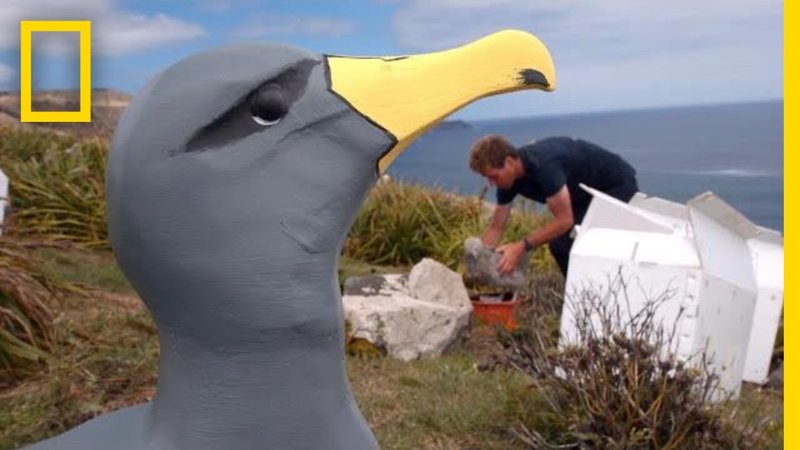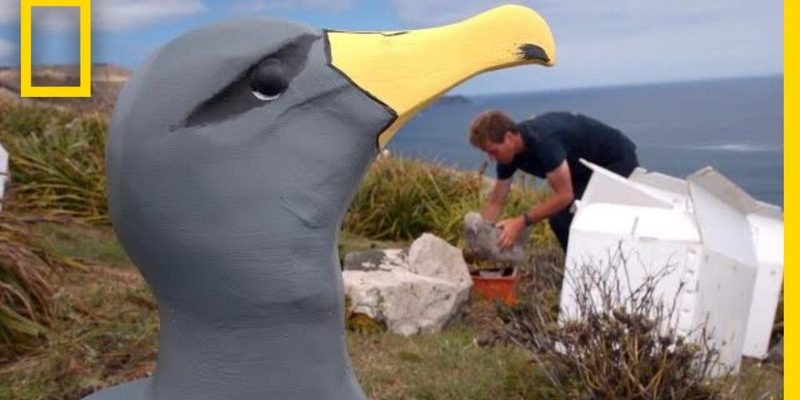
So, how do they do it? Albatrosses have developed a set of remarkable skills and behaviors that help them survive in extreme conditions, from strong winds to long distances between food sources. Let’s dive into the world of albatrosses and explore the secrets behind their resilience.
1. Mastering the Art of Flight
Albatrosses are renowned for their incredible wingspan, which can reach up to 12 feet. This massive size wouldn’t be beneficial without the right technique, though. They use a flying method called dynamic soaring, which allows them to exploit wind gradients above the ocean’s surface.
Here’s the deal: Albatrosses can glide for hours without flapping their wings. They catch the wind currents, rising and dipping over the waves, which conserves their energy. This is crucial when food is sparse, and they need to travel long distances to find it. It’s almost like taking the scenic route to a restaurant and enjoying the ride while saving gas!
Using Wind Wisely
You might be wondering how these birds handle bad weather. Well, they actually thrive on it! Strong winds can help albatrosses soar even farther with less effort. During storms, they take advantage of powerful gusts to cover vast distances, which is crucial for finding food. Their lightweight bodies and large wingspan help them navigate through turbulent air with remarkable agility.
This ability to fly great distances is not just a party trick; it’s essential for their survival. Albatrosses can travel thousands of miles in search of food, often covering areas where resources are plentiful. So, it’s not just about being able to fly; it’s about knowing how to make the most of the winds.
2. Finding Food in the Open Ocean
Now, let’s talk about how albatrosses find their meals. These birds primarily feed on squid, fish, and krill, often scavenging from fishing boats. They have keen eyesight, which helps them spot food from a distance, and their strong beaks are perfect for catching slippery prey.
But here’s the kicker: they often travel in groups to find food. Albatrosses are social when it comes to feeding. If one bird spots a school of fish or a bait ball, you can bet others will quickly show up to join the feast.
The Role of Adaptability
The key to their success? Adaptability. Albatrosses can adjust their feeding strategies based on the availability of food. If one method isn’t working, they’re not afraid to try another. This flexibility is essential in the ever-changing ocean environment. It’s like being a chef who can whip up a gourmet meal with whatever ingredients are available!
As climate change affects ocean currents and temperatures, the availability of food may shift. Albatrosses that can quickly adapt to these changes will have a better chance of survival.
3. Nesting in Harsh Conditions
Another challenge albatrosses face is finding suitable nesting sites. Most species prefer remote, rocky islands that are hard for predators to access. These places might seem unwelcoming—think rugged cliffs and windswept shores—but they offer some protection for nesting chicks.
Albatrosses usually build their nests using grass, twigs, and even their own feathers, creating a cozy spot to lay their eggs. The harsh conditions serve a purpose: the more isolated the nesting site, the fewer threats there are from land predators.
Long-Term Commitment to Parenting
Once they lay their eggs, albatrosses are incredibly dedicated parents. They often mate for life and share incubation duties, which can last for about 11 to 13 weeks. This commitment ensures that their chick gets the best chance at survival. After hatching, the chick requires several months of care before it can fend for itself.
Honestly, this level of parental investment speaks volumes about their survival strategy. They put in the work because the ocean is unforgiving, and a well-raised chick stands a much higher chance of making it in the wild.
4. The Importance of Social Bonds
Albatrosses are not just solitary travelers; they thrive on social connections. They often congregate in large colonies, which provides both safety in numbers and opportunities to find food.
During the breeding season, these birds engage in elaborate courtship displays that strengthen their pair bonds. Watching two albatrosses dance and call to each other is like seeing a beautiful ballet unfold. This social aspect not only helps them find mates but also fosters relationships within the colony.
Shared Knowledge and Learning
The social structure of albatross colonies is beneficial in another way: shared knowledge. Younger birds learn essential survival skills from older, more experienced ones. They watch how the adults find food and navigate the waters, picking up tricks that help them when it’s their turn to head out into the world.
It’s like having a mentor in life, guiding you through challenges and showing you the ropes. These learned skills become vital as conditions change and the birds must adapt to survive.
5. Facing Climate Change
Unfortunately, albatrosses, like many wildlife species, face significant threats from climate change. Rising ocean temperatures and changing currents can drastically affect their food sources. It’s a real concern that can challenge their survival in a way we might not fully appreciate.
As ocean temperatures rise, fish populations may shift, and the delicate balance of their ecosystems can be thrown off. Albatrosses will need to adapt even more quickly than before, relying on their remarkable capabilities to thrive amidst change.
Conservation Efforts
Thankfully, many organizations are working to help these magnificent birds. Conservation efforts include tracking their movements, protecting their nesting sites, and reducing fishing bycatch. By promoting sustainable fishing practices, we can help ensure that albatrosses and their food sources remain safe.
Here’s the thing: While these birds are tough, they need our help. By supporting conservation efforts, we can help them continue their incredible journey through the skies and oceans.
Albatrosses are truly remarkable creatures, showing us how adaptability, social bonds, and dedicated parenting play a huge role in survival. Their ability to thrive in harsh environments teaches us valuable lessons about resilience. Next time you think about these magnificent birds, you can appreciate not just their beauty but also the complex lives they lead.
As we navigate our own challenges, let’s remember the albatrosses’ spirit and their tenacity in the face of adversity. They soar through life with grace, showing us how to persevere in tough conditions. So, here’s to the albatross—may they continue to glide over the waves for many generations to come!

